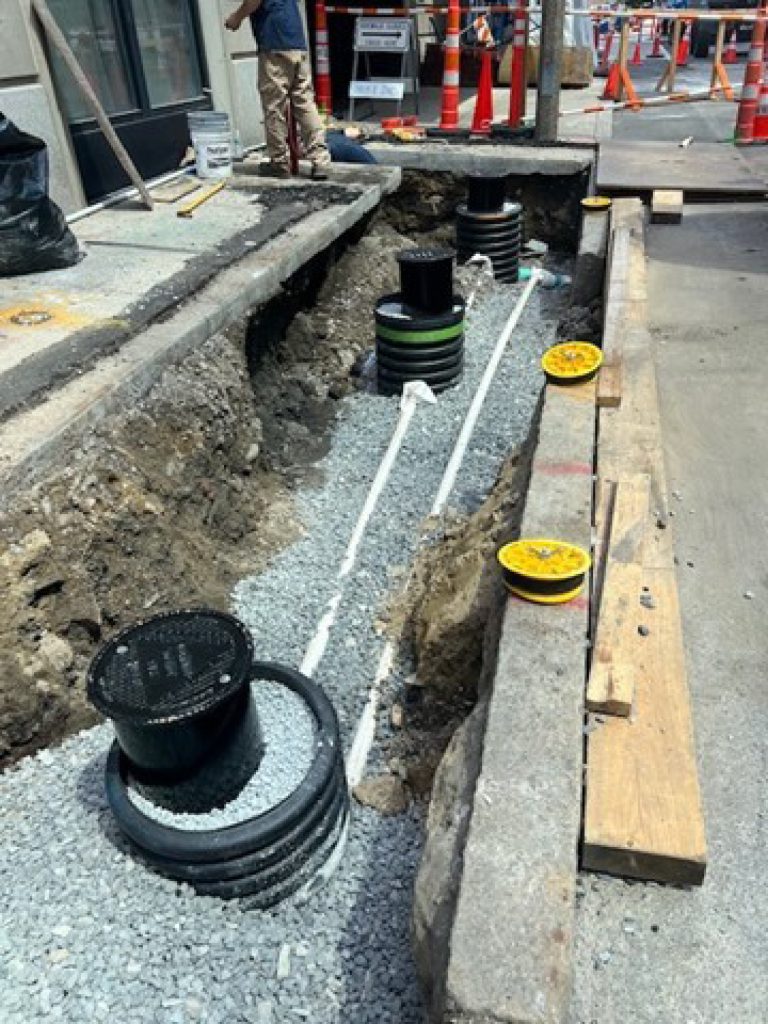Timber Piles at Risk: Groundwater Recharge Solutions for Urban Preservation

The Back Bay neighborhood in Boston, MA, has a unique history where high-rise and brownstone buildings sit in an area that was originally part of the Charles River basin. Many of the structures built in the late 19th and early 20th centuries were founded on untreated timber piles that bear in the stiffer clay soils below. However, groundwater levels have been negatively impacted in the area as urban development continued, exposing the tops of these untreated timber piles and causing accelerated deterioration. In response, the City of Boston has developed regulations to prevent pile deterioration, restore groundwater levels, and protect and enhance the city’s historic neighborhoods and structures. These are similar to regulations in other municipalities like Washington, DC, and New York City that seek to reduce stormwater runoff volume during heavy rain events, mitigate ground subsidence, and maintain groundwater levels.
In this webinar, we will describe groundwater recharge systems, explore when they are necessary or required by local authorities having jurisdiction, and share best practices for designing and implementing them.
LEARNING OBJECTIVES
After attending this webinar, participants will be able to:
- Understand when groundwater recharge systems may be necessary.
- Become familiar with the components of a groundwater recharge system.
- Become familiar with the design process for groundwater recharge wells.
- Understand the design roles and responsibilities for designing these systems.
Participants will earn 1 AIA CES Learning Unit (LU/HSW) for attending the seminar. Registration is free. Please note that space is limited – email events@sgh.com to join our waitlist if the session is closed when you register.

